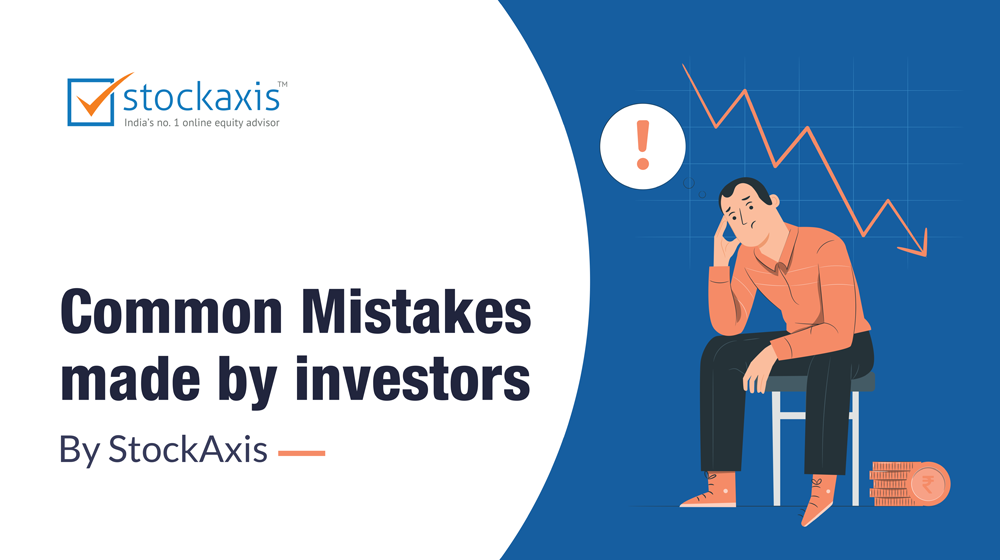Sales, Profit Margins and
Return on Equity (ROE)
2.1 - Key Fundamentals: Sales, Profit Margins, Return on Equity (ROE)
Sales growth, profit margins and return on equity are vitally important in evaluating a company's health. This lesson explains the importance of these financial parameters and how to identify well-performing companies based on these parameters.
2.2 - Sales (or Turnover) Growth
A company’s sales figure shows the money earned by the company from sales of its products or services. This figure indicates the amount of demand for the company’s products or services. Increase in sales results in increase in a company’s earnings. The other way to increase earnings is by reducing expenses. Ideally, a company should aim to increase sales while controlling expenses.
A company with strong sales growth to support its earnings growth is an important parameter for stock selection. Think of sales growth as the foundation under your house: if it is loose, it's not as stable as one with all the structural elements in place. When you see a company increasing its sales, it's telling you its business is drawing larger demand and is structurally sound and prepared to expand and generate the earnings capable of boosting its stock price.
Higher demand is driven by a number of factors including a larger number of customers, customers increasing their purchase volume, introduction of new products, expansion into new markets and improvements in existing products.
The top performing companies show consistent double- or triple-digit sales growth. It's even better when the percentage growth rate increases quarter after quarter. Such acceleration is the hallmark of quality growth companies. They reflect a well-managed organization.
2.3 - How high should sales growth be?
The three most recent quarters should each have strong sales growth of at least 25% compared to the same quarters in the earlier year; for example, sales in the first quarter of the current year should have grown by at least 25% over the first quarter of the previous year; similarly, sales of the second quarter of the current year should have grown by at least 25% over the second quarter of the previous year. Alternatively, sales growth should be accelerating in the last three consecutive quarters.
2.4 - Watch For Pitfalls In Sales Figures
Look for companies with sales growth that is sustainable
Sometimes an increase in sales can be deceptive; it may not necessarily be what you expect. For instance, if a company relies on only a handful of customers for business, even if these customers have bought more from the company, losing even one of these customers would result in a fall in sales. Similarly, a company that relies heavily on exports will face a problem if the Indian rupee appreciates vis-à-vis other currencies or if there is political turmoil or an economic downturn in the markets where the company exports its products. In case of a pharma company that gets the bulk of its sales from a few flagship products, any fluctuation in demand for these products will result in a fall in sales. In case of a retail company, setting up new stores will increase the sales figures but it may hide the fact that sales in existing stores have fallen. To provide a clearer picture, retailers report sales store-wise and as a whole. Some companies record sales that are expected to take place a few weeks or months later in order to show a healthy sales figure. For some companies, sales are higher only because of the impact of inflation and not because of an increase in demand; this is typical in commodity companies. You must look for companies where sales growth can be sustained and reflects real growth.
2.5 - Profit Margins: Another Way To Assess Earnings Performance
Profits are what the company is left with after all expenses. Profit margin is calculated as ‘profits as a percentage of sales’. As an investor, look for companies that generate an increasing percentage of profit out of every rupee of sales. The larger the margin, the better a company is at managing and leveraging its business.
Studies of the greatest winning stocks revealed that most showed strong and even expanding profit margins before they made huge price moves. While higher profit margins indicate one of the qualities of a well-performing company, the margin numbers vary widely among industries. For example, profit margins of companies in the pharma industry will vary from margins of companies in the FMCG industry. Look for companies whose margins are among the best in their industry.
Let's take profit margins one step further. There are two types of profit margins – after-tax margin and pretax margin. After-tax margin is the profit remaining after payment of all expenses and taxes; pretax margin is the profit after all expenses except taxes.
| Sales | ₹100 crores |
|---|---|
| Pretax Profit (after all expenses but before taxes) | ₹10 crores |
| Pretax margin (Pretax Profit/Sales x 100) | 10% |
| After-tax Profit (after all expenses and taxes) | ₹8 crores |
| After-tax margin (After-tax Profit/Sales x 100) | 8% |
Analysts and investors assess both pretax and after-tax margins. Some prefer pretax margins because they show realistic profitability without the distortion of varying tax rates.
You should look for annual pretax profit margins of at least 15%. After-tax margins should be at all-time highs for the company or within 10% of the high.
- Look for companies with annual pretax profit margins of at least 15%.
- After-tax margins should be at all-time highs or within 10% of the high.
Increase in profit margins are different from increase in earnings
| Quarter 1 | Quarter 2 | |
|---|---|---|
| Sales | ₹100 crores | ₹80 crores |
| Pretax margin (Pretax Profit/Sales x 100) | 10% | 13% |
| Profits^ | ₹10 crores | ₹10 crores |
| Profit margin (Profit/Sales x 100) | 10% | 13% |
| ^Profits have remained the same while margin has increased. You see how a higher margin doesn't automatically mean bigger profits? |
crores | crores |
Of course, increasing profit margins alone doesn’t make for a good investment. You need to keep an eye on all the key fundamentals. Rising profit margins mean little if sales are dropping, unless there's a change in strategy and the company drops inefficient product lines, for example.
2.6 - Return On Equity: How Efficient A Company Is With Its Money
ROE is one of the most popular ways to evaluate the financial performance of a growth company. ROE, sometimes called earnings power, indicates how profitably a company is using its shareholders' money. It is also a reliable indicator of what a company can earn in the future. High ROEs, year after year, tend to reflect increasing profitability and superior management. Cyclical stocks, those that roughly move along with the economy, usually show more mediocre ROEs.
- Avoid companies with less than 17% return on equity.
- Top-performing companies tend to have ROEs of 20% to 30%; sometimes 40% or even higher.
You should generally avoid companies with less than 17% return on equity. ROEs vary among industries, but this is the minimum you should find acceptable. And be sure to compare a company's ROE with ROE of its competitors for an objective assessment. In most industries, the top-performing companies tend to have ROEs of 20% to 30%. Occasionally, companies will boast ROEs of 40% or even higher. The higher the percentage, the more efficient a company is in utilizing its capital.
ROEs have been increasing over the past several decades, largely because high technology has helped cut costs and boost productivity.
2.7 - The next steps
Get a complete picture of the stock by assessing…
01. Sales growth
02. Profit margins
03. Return on equity
04. Earnings growth
05. Institutional sponsorship
06. Relative price strength
07. The stock’s price chart
Now, let's say you've found a company with (1) great sales growth; (2) attractive profit margins and (3) high return on equity. What's next? Earnings growth! Don’t forget to check this parameter (the earnings lesson discusses how to evaluate earnings). Additionally, you must also assess ‘institutional sponsorship’ (the amount of buying by mutual funds and other institutional investors; this is discussed in the sponsorship lesson) and relative price strength (Relative Price Strength Rating ‘Technical Rating’ assesses a stock's price performance over the past 12 months and compares it to all other stocks. The rating is expressed on a scale of 1 to 99, with 99 being the best. This is covered in the ‘Leaders’ lesson.) You must also study the stock’s price chart to complete the stock selection picture.
2.8 - Key Points to Remember
- Strong sales growth is one key indicator of a company's success. Quarterly sales growth should be up at least 25% in the most recent quarter. Otherwise, they should be accelerating.
- Profit margins tell you how much of a company's sales end up as earnings after expenses. Generally, the higher profit margins, the better.
- Return on equity measures how well a growth company can produce earnings with shareholders' capital. Look for ROEs of at least 17%.







